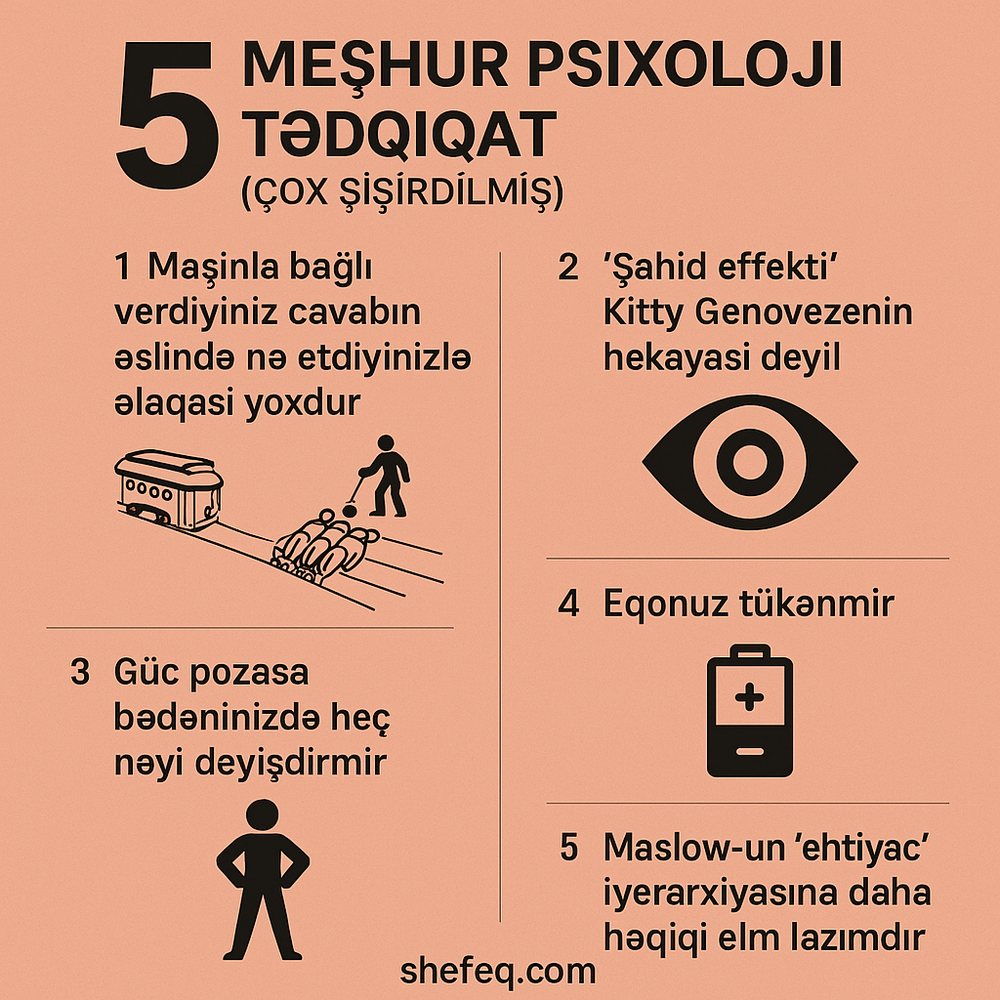In psychology, there are studies around which discussions and distortions have arisen. As a result, these works have entered the collective consciousness of society. Often, results that seem simple and are presented as “lasting truths” about human nature are, in fact, either misinterpreted or lack any real scientific basis.
Let us take a look at five of the most exaggerated and famous studies.
1. The Trolley Problem – Hypothetical Scenarios Do Not Reflect Real Behavior
The trolley problem is a classic example of ethical debates: is it right to sacrifice one person in order to save several others? For decades, this thought experiment has appeared in philosophy classes, popular culture, and even TV shows. Variations include choosing between the life of one child versus five adults, or pushing a heavy man onto the tracks.
This has even developed into a separate area known as “trolleyology.” Research shows, however, that people answer hypothetical questions one way but behave quite differently in real-life situations. In experiments, for example, mice were used: participants had to decide whether to sacrifice one mouse to save another or five others. The result was clear — real choices differed greatly from hypothetical responses.
In short, the trolley problem may serve as an interesting discussion point, but it is not a reliable tool for predicting real behavior.
2. Kitty Genovese and the Myth of the “Bystander Effect”
In 1964, a young woman named Kitty Genovese was murdered in New York. For many years, the event was presented as: “38 people witnessed it and no one helped.” This case became the classic example of the “bystander effect.”
However, later research showed:
-
None of the 38 people witnessed the entire incident;
-
Some did call the police, but at that time there was no 911 service, and the process was difficult;
-
One neighbor even attempted to help Genovese.
The story spread widely due to a sensational article in The New York Times. Although used in psychology textbooks for decades, the factual basis was distorted. Thus, while the bystander effect does exist, the case of Kitty Genovese cannot be considered reliable proof of it.
3. The “Power Pose” – The Myth of Gaining Confidence Through Body Language
In 2010, psychologists Amy Cuddy and Dana Carney published a well-known study claiming that the so-called “power pose” — for example, standing like Superman — increases testosterone, lowers cortisol, and makes a person feel more confident. The study gained immense popularity, and Cuddy’s TED Talk became one of the most viewed of all time.
However, later experiments failed to replicate the results. Large-scale meta-analyses revealed that the power pose has no physiological effects. The only outcome observed was a subjective sense of increased confidence.
Conclusion: the power pose does not change hormonal levels — it only creates a short-term psychological placebo effect.
4. Ego Depletion – Does Willpower Weaken Like a Muscle?
Psychologist Roy Baumeister proposed the famous “ego depletion” theory, which argued that willpower functions like a muscle: it weakens with overuse but can be replenished with glucose. This theory was long considered one of the most influential in psychology.
One example often cited was an Israeli court study: supposedly, judges granted parole less often later in the day because their “willpower was depleted.” Yet later studies failed to confirm this claim.
Meta-analyses demonstrated that ego depletion is either very weak or nonexistent. Moreover, glucose does not increase willpower — experiments with lemonade showed that the effect was placebo, not physiological.
Conclusion: the popular theory of willpower depletion has not been scientifically proven.
5. Maslow’s Hierarchy of Needs – A Good Model, But Without Scientific Evidence
Maslow’s hierarchy of needs — from physiological needs up to self-actualization — is one of the most recognizable models in psychology.
The problem is that the model lacks strong empirical evidence. In reality, people do not always meet their needs in strict “bottom-to-top” order. For example, some pursue creativity and spiritual growth even while facing financial struggles.
Modern psychology has largely abandoned Maslow’s hierarchy in favor of more flexible models, such as self-determination theory, which emphasizes three core factors:
-
social connection,
-
competence,
-
autonomy.
These are now considered more reliable foundations for human well-being.
Conclusion
These five examples show that many popular theories and experiments in psychology have either been misinterpreted or lack solid scientific evidence. Scientific knowledge is constantly evolving, and over time we gain more accurate insights. Therefore, instead of accepting popular stories as “truth,” it is important to examine the real evidence behind them.

